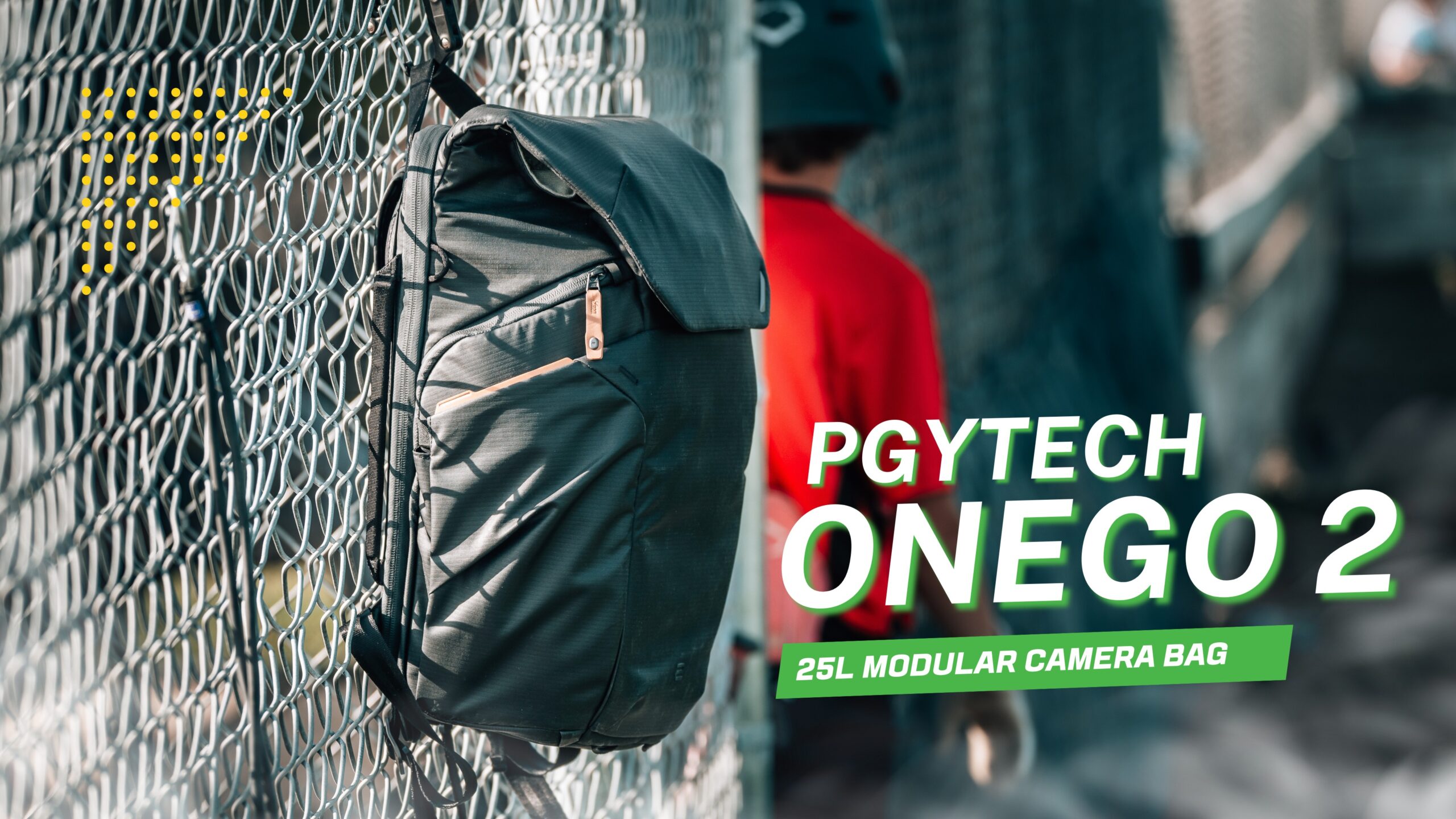Glacier National Park lets you capture snow-capped peaks at sunrise and the northern lights at night – something few places offer. The park’s status as an International Dark Sky Park makes it one of North America’s most exciting spots to photograph diverse landscapes.
Lake McDonald’s crystal-clear waters and wildflower-filled alpine meadows create perfect shots everywhere you look. Summer brings different photography opportunities throughout the season. You’ll find gushing waterfalls and snow-peaked mountains in early summer, while spectacular high-elevation wildflower displays emerge in mid-to-late summer. Wildlife photography here is exceptional too. Mountain goats, bighorn sheep, and bears often appear in frame – just remember to stay 100 yards from grizzlies and 25 yards from other wildlife.
The park’s faster changing weather and dramatic light conditions just need solid technical skills and good preparation. This piece will take a closer look at techniques, prime locations, and pro tips that help create stunning images in this remarkable setting. Let’s become skilled at photographing Glacier National Park.
Essential Camera Settings for Glacier Park
Camera settings are the foundations of capturing Glacier National Park’s varied landscapes. Photographers can document everything from towering peaks to rushing waterfalls by understanding how aperture and shutter speed work together.
Best aperture settings for landscapes
The optimal aperture range for mountain landscapes in Glacier National Park sits between f/8 and f/11. This range delivers excellent sharpness while keeping sufficient depth of field. You might want to open up to f/1.8 or f/2.8 to maximize available light when shooting during sunrise or sunset.
Your landscape compositions need apertures between f/11 and f/16 to achieve front-to-back sharpness, especially when photographing scenes with both close and distant elements. This range helps you maintain focus from foreground elements to distant peaks. Shooting beyond f/16 can introduce diffraction that might soften the overall image.
Shutter speeds for waterfalls and wildlife
Glacier’s waterfalls need careful attention to water flow and desired effect. Silky-smooth water effects require shutter speeds between 1/8 second and 8 seconds. Powerful falls need faster speeds to keep detail, while gentler cascades work well with longer exposures.
Here are the recommended shutter speeds for different water effects:
- 1/250 second or faster: Freezing water droplets and splash details
- 1/15 to 1/125 second: Natural-looking water movement
- 1/8 second or slower: Silky, smooth water effects
Wildlife photography demands preparation and quick adjustments. You should stay 100 yards from bears and wolves, and 25 yards from other animals when photographing Glacier’s diverse wildlife. Sharp images of moving animals need fast shutter speeds. A sturdy tripod or bean bag support helps when working with telephoto lenses.
Many animals become most active during early morning and late evening hours. You’ll need to balance faster shutter speeds with available light. Overcast skies offer more consistent lighting conditions and eliminate harsh shadows, making it easier to capture detail in both bright and dark areas of your subject.
Successful wildlife photography often involves patient waiting followed by brief moments of action. Having your camera pre-configured with appropriate settings will help you capture crucial shots without fumbling with parameters.
Mastering Light in Mountain Landscapes
Light shapes every photograph in Glacier National Park and turns ordinary scenes into extraordinary images. You can take your mountain photography from simple snapshots to compelling landscapes by learning to work with different lighting conditions.
Working with harsh midday sun
The harsh midday light is a chance to create compelling photographs, despite what many believe. You should look for scenes with natural contrast rather than trying to force a different style. The secret lies in working with the light’s characteristics rather than fighting against them.
Your midday shots will work better if you position subjects sideways – dark shade to one side, reflected light to the other. This creates dramatic side-lit compositions with depth. A polarizing filter helps cut down glare and haze, which become intense at higher elevations.
Capturing golden hour at high altitudes
Glacier National Park’s elevation gives its golden hour distinct characteristics. The color temperature during this time ranges from 2,500 to 3,000 Kelvin, compared to 5,500 Kelvin at midday. We noticed morning golden hour brings slightly cooler light with bluer shadows, while evening golden hour creates warmer tones from increased particles in the air.
The best results come when you arrive at your location 60 minutes before sunset or 45 minutes before sunrise. The atmosphere’s thinness at high altitudes creates more vivid colors and sharper images. Cloud cover can help by providing even lighting and preventing extreme contrasts.
Using filters effectively
Three types of filters are the foundations of mountain photography:
- Circular Polarizer (CPL): Improves sky colors and reduces reflections from water and wet rocks
- Soft Graduated Neutral Density: Balances exposure between bright skies and darker foregrounds
- Standard Neutral Density: Controls exposure in bright conditions
Soft graduated filters work better than hard graduated ones in the mountains because of jagged ridge lines. Stacking multiple filters can work, but watch out for vignetting. You can combine a polarizer with two ND filters to create special effects.
The polarizing filter is a vital tool when shooting scenes containing water or wet rocks. It cuts through glare and reflections to deliver natural-looking images while improving color saturation. Mountain conditions change rapidly, so carry a 0.9 (3-stop) and 0.6 (2-stop) soft graduated ND filter for optimal versatility.
Top Photography Spots in Glacier
Finding the best photo spots in Glacier National Park takes smart planning and a good eye for what makes each location special. Two spots really shine when it comes to getting amazing shots.
Lake McDonald photo opportunities
Lake McDonald, near the west entrance, is a chance to get exceptional photos any time of day. The Apgar area gives you the most stunning views, and it’s perfect to capture reflections and mountain silhouettes. Note that sunrise and sunset both create magical scenes, though your best bet for reflections comes in the morning when the water’s calmer.
To get your best shots at Lake McDonald:
- Dawn hours: Capture mirror-like reflections and alpenglow
- Midday: Focus on the colorful pebble shoreline
- Sunset: Document silhouetted peaks and warm light
- Night: Photograph star trails and northern lights
The dock at Apgar works great as a vantage point and lets you frame both the lake and surrounding peaks. The southeastern edges of Lake McDonald show off those famous multicolored pebble shorelines. Photographers can find many small coves along the shore, which means you’ll have plenty of quiet spots for unique compositions.
Hidden Lake composition tips
Hidden Lake brings its own set of photo challenges but rewards you with amazing shots. The viewing deck gives you stunning elevated views, and you can capture the whole landscape using a 16-35mm wide-angle lens. The trail takes you through Hanging Gardens meadow, where you can add wildflowers to your foreground compositions.
The lake’s complex bathymetry creates interesting compositional options. Its linear geometry and multiple sub-basins give you different views, especially during morning and evening hours. The water’s clarity, with light going down to 34 meters in July, helps you capture incredibly clear images.
Safety is a vital part of photographing Hidden Lake, especially during golden hours. Bears often visit the area when light is low. Keep your distance – stay 100 yards from bears and wolves, and 25 yards from other wildlife. On top of that, the high-elevation spot has weather that changes faster than you’d expect, so pack the right gear and clothing.
The Hidden Lake overlook trail runs 2.7 miles round trip and gives you plenty of spots for great compositions. The viewing deck works great to show how the lake connects with surrounding peaks. Going down to the lake lets you explore different angles for more intimate landscape shots.
Wildlife Photography Techniques
Wildlife photography in Glacier National Park needs a mix of technical know-how and ethical practices. Taking great shots of the park’s wildlife means you must understand safety rules and master your equipment.
Safe distances for wildlife shots
Safety is the life-blood of wildlife photography in Glacier National Park. You must stay at least 100 yards from bears and wolves, and 25 yards from all other wildlife. These rules protect both you and the animals while letting them behave naturally.
Slow and careful movements work best when you approach wildlife subjects. Animals don’t like sudden moves, so you should avoid eye contact or walking straight toward them – they might see this as threatening behavior. Your car makes an excellent hide, often letting you get closer than on foot while keeping you safe.
The right timing makes a big difference to wildlife encounters. Animals are most active at dawn and dusk. Each species has its favorite spots:
- High elevations: Mountain goats and sheep
- Open meadows: Bears and elk
- Creek sides: Moose and deer
- Forest areas: Songbirds
Camera settings for moving animals
Sharp wildlife images depend on the right camera settings. Wildlife photography needs quick shutter speeds to stop motion. Static wildlife shots start at 1/250th of a second, while moving animals need 1/500th or faster. Birds in flight need even faster speeds, from 1/2000th to 1/4000th of a second.
Blurry wildlife photos usually happen because of slow shutter speeds. Low light conditions work best with your lens’s widest aperture – usually f/2.8, f/4, or f/5.6. Notwithstanding that, ISO settings between 400-800 let you keep fast shutter speeds while managing image noise.
Your hand-holding technique affects image sharpness by a lot. Support the lens with your left hand and keep three contact points – both hands on the camera and the viewfinder against your face. Your elbows should stay close to your body with steady breathing.
Wildlife photographers often wait for long periods before the action starts. Watching animal behavior helps you spot photo opportunities. Continuous autofocus helps track moving subjects, but use it carefully since it might struggle with subjects that barely move.
Advanced Composition Methods
Photography techniques can turn ordinary mountain scenes into breathtaking images. You just need to pay attention to foreground selection and depth creation to capture amazing photos in Glacier National Park.
Using foreground elements
Foreground elements tell powerful stories in mountain photography. A strong foreground complements the story of the photograph and pulls viewers into the scene. The dramatic, jagged peaks and rough topography of Glacier National Park give you countless chances to create interesting foreground compositions.
To make your foreground work well:
- Select elements that complement rather than compete with the background
- Position the camera low to boost foreground effect
- Create visual paths through the scene using natural patterns
- Keep edges clean without distracting elements
Your foreground elements work best when they connect naturally with the background. Rocks, wildflowers, or fallen trees can frame your shot and guide eyes toward distant peaks. You can establish depth by placing these elements in the lower third of the frame while keeping compositional balance.
Creating depth in mountain scenes
Two-dimensional photographs become immersive experiences when you add depth. You can create a three-dimensional feel by layering foreground, middle ground, and background elements. Glacier National Park’s dramatic landscapes let you layer these elements naturally.
Weather conditions are vital to create depth. Fog or mist naturally separates distant elements and makes mountains look more imposing. Early morning or late evening light creates natural separation between landscape layers through shadows and bright spots.
Your viewpoint helps create depth too. Higher elevation helps you separate the foreground, middle ground, and background visually. Trees or rock formations that get smaller with distance reinforce scale and distance in your photos.
Space between compositional elements makes depth more noticeable. To cite an instance, Swiftcurrent Lake’s shoreline lets you separate distinct elements while keeping compositional harmony. Yet you should keep it simple when the scene calls for it.
Light differences between layers make depth stand out. Look for elements lit differently to suggest spatial separation in whatever conditions you face. This works exceptionally well during golden hour when shadows naturally separate landscape elements.
Leading lines guide viewers through mountain scenes effectively. These lines work best when they start from the frame’s corners, whether they’re trails, streams, or natural patterns. The trail to Avalanche Lake shows how to use leading lines through waterfalls and cascades.
Post-Processing Glacier Photos
Raw captures transform into compelling mountain imagery through post-processing that needs technical precision and artistic vision. The secret to great Glacier National Park photography lies in keeping natural appearances while boosting the dramatic elements that make each scene special.
Boosting mountain details
RAW format creates the foundation to process mountain images and preserves maximum detail for post-production work. We focus on revealing textures in rock faces and snow-covered peaks without making them look artificial. The quickest way to boost mountain details includes:
- Selective Clarity adjustments to boost midtone contrast
- Dehaze tool cuts through atmospheric haze in distant peaks
- Subtle sharpening maintains natural textures
- Balanced vibrance and saturation prevents oversaturated skies
Tone mapping changes mountain detail enhancement significantly. Small adjustments to highlights and shadows work best at first. You can gradually build up detail while keeping natural appearances. Local contrast enhancements help emphasize tonal transitions within small areas and preserve the relationship between bright and dark tones across the image.
Balancing exposure differences
Mountain landscapes show extreme contrast ranges, especially during sunrise and sunset. Even the most advanced cameras can’t capture the full range of light in these scenes. Several techniques work well to manage these challenging conditions.
Exposure blending gives you precise control over different image areas. You should capture multiple frames at different exposure values to ensure proper exposure for both highlights and shadows. This method lets you adjust different image zones selectively while maintaining a natural look, just like traditional darkroom techniques.
HDR processing offers additional control for scenes with extreme contrast. This technique works best for:
- Sunrise and sunset scenes with bright skies
- Deep shadow areas that contain important detail
- Scenes with reflective water surfaces
Natural-looking results come from:
- Capturing bracketed exposures in RAW format
- Merging exposures in specialized software
- Applying selective adjustments to different areas
- Fine-tuning contrast and color balance
Circular polarizer filters reduce post-processing work needed for managing reflections and glare. Water features might need separate exposures for moving elements that allow precise control over their appearance in the final image.
Winter scenes with snow and ice need careful attention to highlight recovery. You must preserve detail in bright snow while maintaining shadow detail in darker rock and tree areas. The end goal matches the visual experience of being present in these remarkable landscapes.
Conclusion
Becoming skilled at photography in Glacier National Park just needs technical skill, artistic vision, and respect for nature. Photographers can capture the park’s majestic landscapes and wildlife beautifully through proper camera settings, light understanding, and careful composition.
The safety of wildlife comes first. Photographers should keep appropriate distances to protect themselves and document authentic animal behavior. Ordinary captures turn into compelling visual stories that showcase the park’s grandeur when photographers use advanced composition techniques and thoughtful post-processing.
Your success in mountain photography depends on patience, preparation, and practice. Simple techniques work best at the start. Your confidence will grow as you experiment with advanced methods. Glacier National Park offers unique opportunities with each visit. You can capture its changing beauty from Lake McDonald’s mirror-like reflections to dramatic wildlife encounters near Hidden Lake.
FAQs
Q1. What are the recommended camera settings for photographing Glacier National Park? For landscape shots in Glacier, use an aperture between f/8 and f/11 to achieve good depth of field. For waterfalls, experiment with shutter speeds between 1/8 second and 8 seconds to create silky water effects. When photographing wildlife, use faster shutter speeds (1/500th or higher) to freeze motion.
Q2. Which lenses are best suited for capturing Glacier National Park’s scenery? A wide-angle lens, such as a 14-24mm f/2.8 zoom, is excellent for landscape photography in Glacier. This type of lens allows you to capture expansive mountain vistas and is also suitable for night sky photography under the park’s dark skies.
Q3. How can I create depth in my mountain landscape photographs? To create depth, incorporate foreground, middle ground, and background elements in your composition. Use leading lines, such as trails or streams, to guide the viewer’s eye through the image. Take advantage of atmospheric conditions like fog or mist to naturally separate distant elements and make mountains appear more imposing.
Q4. What are some top photography locations in Glacier National Park? Lake McDonald and Hidden Lake are two prime locations for photography in Glacier. Lake McDonald offers stunning reflections and colorful pebble shorelines, while Hidden Lake provides elevated perspectives and opportunities to incorporate wildflowers in your compositions. Both locations are excellent for sunrise and sunset shots.
Q5. How should I approach wildlife photography in Glacier National Park? When photographing wildlife in Glacier, prioritize safety by maintaining a distance of at least 100 yards from bears and wolves, and 25 yards from other animals. Use a telephoto lens to capture close-up shots from a safe distance. For the best opportunities, visit during early morning or late evening when animals are most active, and be prepared with fast shutter speeds to freeze motion.


